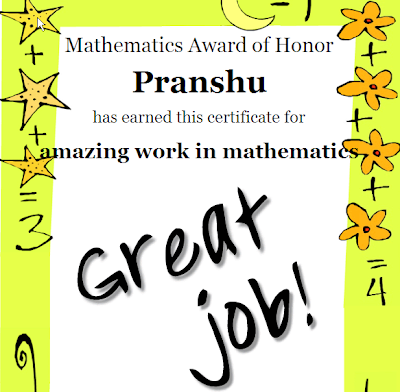Reward and motivation for students is a key for self improvement and growth in life. Being a teacher , I have felt this many times that in a classroom, only good teaching is not sufficient for students.

Are you motivating your students ? No problem. There is an easy way to reward your students.
I found something interesting ...an online certificate creator .
.
All you need to do is type the name of your student ...choose a style...and print.


